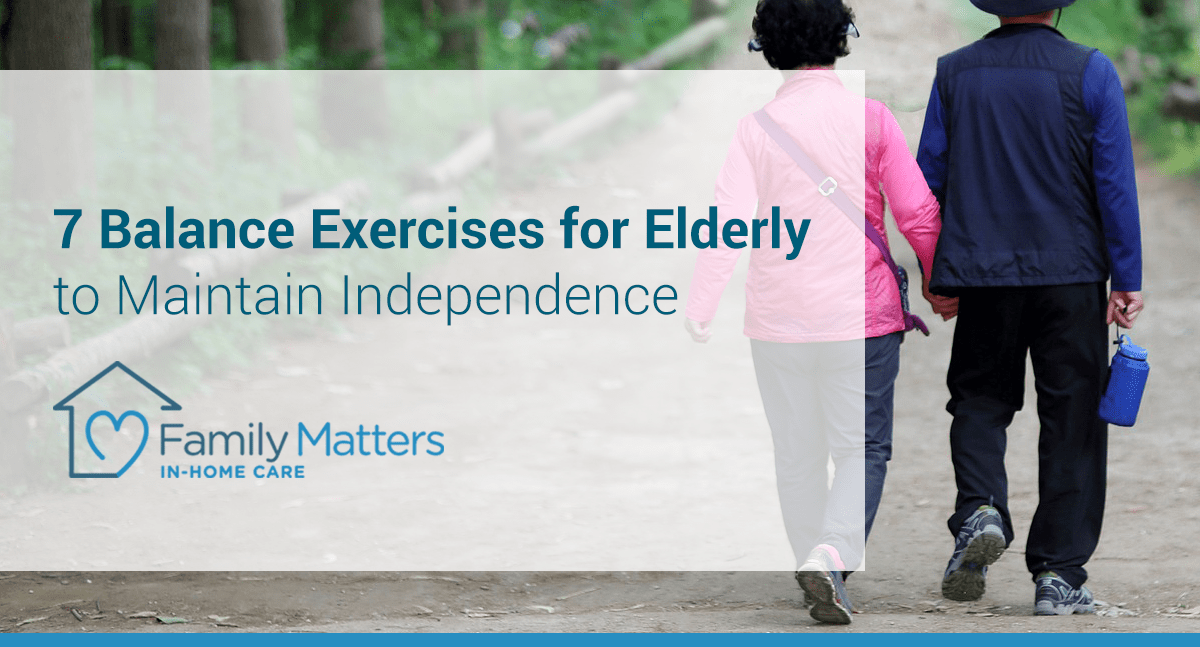
7 Balance Exercises for Elderly to Maintain Independence
Maintaining independence into your twilight years requires you to think about ways to improve strength, flexibility, and most importantly, balance in order to continue performing everyday activities, as well as avoid slip and fall (or other) accidents. Here are a few balance exercises to get you started.
1. Let your toes breathe
Shoes that stabilize your ankles might feel great, but they can actually be detrimental to balance if you wear them all the time. Make sure to spend time walking around your house barefoot to counteract this and keep your feet and ankles stimulated. Try out toe shoes. Or at least choose footwear that has a flat bottom and is roomy enough for your toes to spread out. This isn’t exactly exercise, but it’s a great place to start when improving balance.
2. Walk the line
You don’t have to do it like Johnny Cash, but try to imaging a tightrope or balance beam before you that you have to stay on. Hold your hands out to the sides and walk from one side of the room to the other on your imaginary line, one foot in front of the other. Try to go about 20 paces this way, with your eyes fixed on a single spot. If this seems easy, try it heel to toe (place one foot in front of the other with the heel touching the toe). Then try it with your eyes closed (perhaps with a spotter for safety).
3. Stand on one leg
If you want to improve your balance, one good way is to make like a flamingo and stand on one leg. You don’t have to go so far as a tree pose (if you’re familiar with yoga), but this could definitely be a goal you work up to over time, as you gain strength and flexibility.
It’s best to start out using a chair for this exercise, and as you feel comfortable with it, try taking your hands off the chair back and balancing on your own. Start out by trying to stand on one leg for 10 seconds. Lower the leg and repeat five times. Then switch to the other leg.
From there you can add more reps, and when that seems easy, add more time to each rep. You can also try to raise each leg a little higher if the exercise starts to seem easy. Maintain good posture throughout.
4. Transfer stance
It’s important to be able to transfer weight from one foot to the other, and you can practice this by planting feet about hip-width apart and starting to rock from one side to the other. As body weight transfers to one leg, lift the opposite leg and try to hold it in the air for up to 30 seconds before placing it back down and transferring weight to it, lifting the other leg. Try five reps on each side and add more as you feel comfortable.
5. High knees
You may have seen runners do this exercise while jogging as a way to limber up. For the purposes of improving balance, you’re going to do them much more slowly. Holding onto a chair back if necessary, raise one knee to about hip height in front of you, knee bent, as if marching, then lower it and raise the other. Try to do this twenty times on each side at about a walking pace. When confident, do it without holding the chair.
6. Arm and leg raise
Raise one arm up over your head, then raise the leg on the same side in front of you, holding for about 10 seconds before lowering both. If you need to, hold a chair back with the opposite hand. Switch sides. Repeat five times on each side, and when you feel ready, try it without the chair.
7. Spiral sit and stand
One of the biggest fears with balance issues is falling. A fall can be catastrophic, resulting in serious injury. Luckily, there are balance exercises for elderly that help with both balance and learning to fall without getting hurt.
This exercise requires you to spiral down to a sitting position, rather than simply leaning forward and kneeling, for example. Start by stepping forward the right foot forward, leaning forward at the waist, and starting to swing your arms around toward the left leg. Bend your knees as you continue to turn your body. Your hands should brush the ground and add stability as your right leg folds, with first the outside of your calf and then the outside of your thigh coming to rest on the ground before you settle back onto your sit bones.
This should all be one relatively fluid motion. To stand, reverse the action, pushing off your hands and spiraling upward in the opposite direction. Now try the other side, starting by stepping forward with the left leg and swinging your body to the right. Repeat five times on each side.
If you or your family member is considering in-home care as part of a plan to age in place, contact Family Matters In-Home Care today for a free consultation. Our team is dedicated to supporting your family and helping older adults enjoy life in the comfort of their own home for as long as possible.
Some of the services offered by Family Matter In-Home Care include: Alzheimer’s & Dementia Care, Bed & Wheelchair Transfer Assistance, Companionship, Housekeeping & Meal Preparation, Personal Care, Recovery Care, and Transportation.
